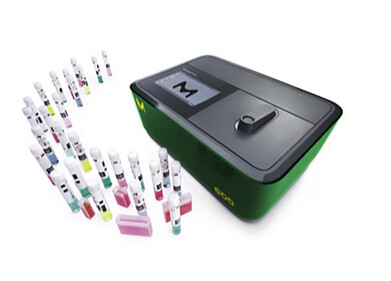Laboratory products
Sample Tracking UID Labels - Small but Mighty
Apr 19 2023
Sample tracking labels aren’t new, but they are one of the most popular labelling solutions Fine Cut supply to laboratories. The days of handwritten sample tracking, that exposed a whole host of errors and mishandling, are a thing of the past. Today, printed labels are getting smaller but are also containing even more data than ever.
Sample tracking allows laboratories to use UID (unique identifiers) to enable quick recognition at any given time throughout the testing and storage process. Rapid identification of patient /sample information, eliminates errors and allows more time for development and improvement within the laboratory.
Labels used for sample tracking are much smaller compared to other labels Fine Cut supply, by the nature of their job they are required to fit small vials and tubes. These can contain samples such as blood and saliva for DNA analysis or samples collected for clinical trials for certain demographics prone to specific medical conditions. UID’s hold data for specific patient cross referencing including the date, patient / sample id number, trial or study number and any other marker specific to the research, trial or study using the label. Label batches can be run from 1000 labels up to 100,000 plus labels.
The most reliable way of presenting and reading data is the barcode. Sample tracking systems assign UID’s to every patient sample received and attaches it to the sample in both human readable and barcode format. The two most common types of barcodes used in this process are 1D and 2D codes.
A 1D barcode (also known as a linear code) uses variable width lines and spaces in a black and white pattern to encode the information from left to right, and usually contains alphanumeric characters. These types of barcodes tend to be used when the data is prone to changing frequently and can be scanned by either laser scanners or camera based.
2D barcodes are graphical images that store information horizontally and vertically in a grid pattern, using dots, rectangles, hexagons and squares to store data and are predominantly used where larger amounts of data are required and when space is limited. The storage capacity is much higher than 1D barcodes and they represent
the next phase in barcode technology.
Accurate, readable data is what Fine Cut specialise in, providing laboratories and medical trials with sample tracking labels which are sized to fit even the smallest collection tubes, but still able to contain all the important data needed to be tracked successfully. Data will be validated and read whilst in production and throughout the
full batch run to ensure barcodes contain the correct data and are successfully scanned and read. This can be done using both mobile and fixed device scanners. They also liaise with the end user to identify how samples will be used and how the data will be read to ensure compatibility. The most common way to provide data would be via CSV or excel files which can be imported into their specialist barcode software.
Their ability to print variable data on to extremely small labels whilst maintaining legibility and durability enables them to offer their customers a product completely fit for purpose. Not only this, but these labels can withstand extreme environments including solvent and chemical tolerance, with smudge resistance and advanced
surface coatings, excellent resistance to scratches, moisture and handling as well as cryogenic freezer storage -80oC to -196oC, with immersion into liquid nitrogen without the risk of de-lamination.
Digital Edition
Lab Asia 31.6 Dec 2024
December 2024
Chromatography Articles - Sustainable chromatography: Embracing software for greener methods Mass Spectrometry & Spectroscopy Articles - Solving industry challenges for phosphorus containi...
View all digital editions
Events
Jan 22 2025 Tokyo, Japan
Jan 22 2025 Birmingham, UK
Jan 25 2025 San Diego, CA, USA
Jan 27 2025 Dubai, UAE
Jan 29 2025 Tokyo, Japan





















